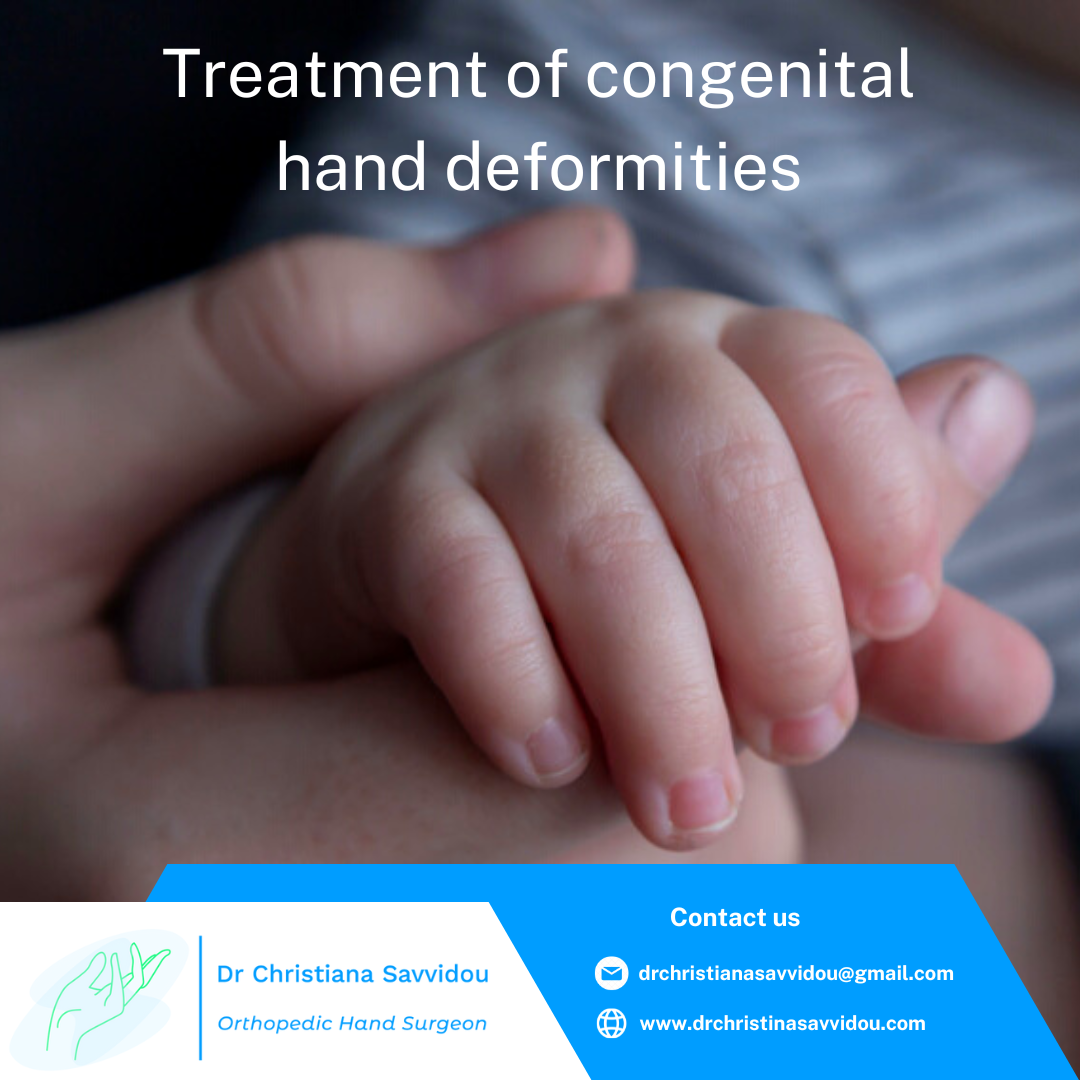Treatment of congenital hand deformities
The outlook for treatment of birth hand abnormalities varies with the type and complexity of the difference. The outlook is generally good when the hand difference is an isolated occurrence. Many children can learn to adapt to their differences. If the difference is part of a genetic syndrome, the outlook depends on the type and extent of the condition.
Specific treatment for congenital hand deformities will be determined after clinical examination based on:
- Your child's age and general health
- Extent of the deformity
- Cause of the deformity
- Your child's tolerance for medications and procedures
- Expectations for the course of the deformity
- Your opinion or preference
Treatment may include:
- Limb manipulation and stretching from parents
- Splinting of the affected limbs and use of external appliances (to help realign fingers or hands)
- Physical therapy (to help increase the strength and function of the hand)
- Surgical treatment: tendon transfers, correction of contractures, skin grafts - involves replacing or attaching skin to a part of the hand that is missing skin or has been removed during a procedure.
- Prosthetics - may be used when surgery is not an option or in addition to surgical correction.
We always keep in mind that treatment cannot "cure" a hand difference, but it can help to improve the function and appearance of the hand. A positive attitude and acceptance of the difference – between the child and the parents – are essential to treatment success and the child’s healthy development.
Early consultation with a hand doctor is an integral part of the treatment process for a child born with a hand deformity.
Further information for specific congenital hand problems will follow in future posts.


